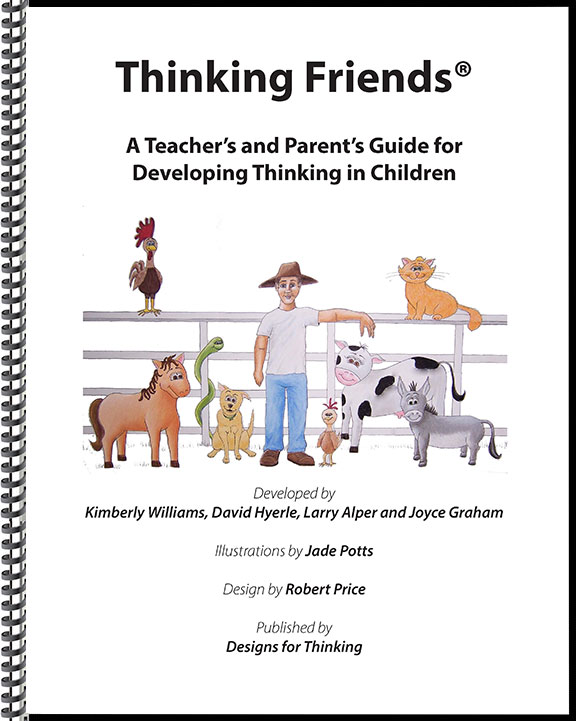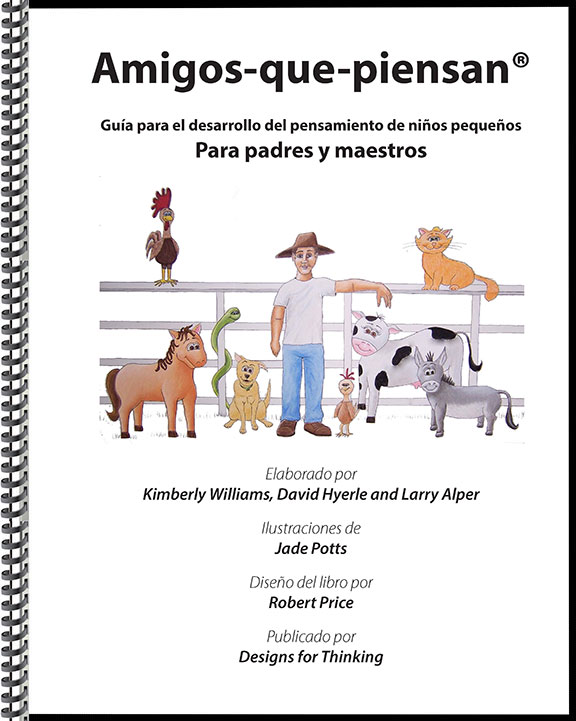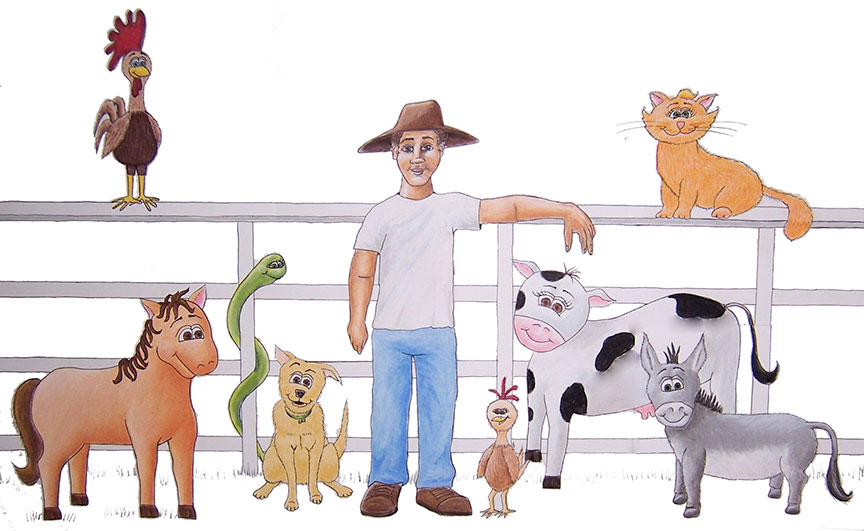Thinking Friends® Guide
 The Thinking Friends® Teacher’s and Parent’s Guide for Developing Thinking in Children (available in English and Spanish) is your primary source for learning how to effectively introduce young children to Thinking Friends® and integrate Thinking Friends® into all aspects of your children’s daily learning experiences.
The Thinking Friends® Teacher’s and Parent’s Guide for Developing Thinking in Children (available in English and Spanish) is your primary source for learning how to effectively introduce young children to Thinking Friends® and integrate Thinking Friends® into all aspects of your children’s daily learning experiences.
What will I find in the Thinking Friends® Guide?
 The Thinking Friends® guide provides you with background on each of the Thinking Friends® and their individual cognitive styles and approaches to learning. With the suggestions for how to effectively interact with children through the Thinking Friends® stories, before, during and after reading, you will have ideas for how to use the friends to guide and support children in their own cognitive and social-emotional development as learners. There is a carefully scaffolded 5-Day Plan and resources for each of the Thinking Friends to support you in introducing them to children in a meaningful developmentally appropriate manner.
The Thinking Friends® guide provides you with background on each of the Thinking Friends® and their individual cognitive styles and approaches to learning. With the suggestions for how to effectively interact with children through the Thinking Friends® stories, before, during and after reading, you will have ideas for how to use the friends to guide and support children in their own cognitive and social-emotional development as learners. There is a carefully scaffolded 5-Day Plan and resources for each of the Thinking Friends to support you in introducing them to children in a meaningful developmentally appropriate manner.
What is the special role of Farmer Framer?
Farmer Framer helps the Thinking Friends® to identify how they know what they know, to surface the factors that influence their ideas, and to help them formulate conclusions and insights from their experiences. He helps the animals to think about their thinking (metacognition) so they gain greater confidence in what they know and understand and learn to appreciate the different “frames of reference” through which others view and experience the world around them. In many ways, Farmer Framer interacts with the Thinking Friends® in very much the same way we encourage you to interact with the children, with the same goal in mind—that the children will learn to be reflective on their own and able to independently and skillfully use all of their innate thinking processes
What happens after children have been introduced
to all the Thinking Friends®?
Because we do not typically use only one thinking strategy to solve problems as we go through our day, the final three stories in this guide show the Thinking Friends® working together with Farmer Framer. In these stories, the “thinking friends” think and problem-solve interdependently and begin to develop the thinking skills that each other represents. The Farmer “frames” the questions for the friends who work together using their thinking styles to contribute solutions. Farmer Framer helps all the Thinking Friends® to identify patterns and to think about their thinking. In the process they learn to think flexibly, work interdependently, and persist in solving complex challenges with a solution they all had a hand or hoof in designing. These final 3 stories become key reference points for you to use as you guide children in learning the same lessons through the experiences you continue to provide at home and in the classroom.
How do I know whether or not children are
benefitting from Thinking Friends®?
It is possible as teachers and parents to use the Thinking Friends® to help assess a child’s cognitive strengths and areas of difficulty. Knowing what to look and listen for will be important as you seek to determine the impact Thinking Friends® is having on your children. The Guide offers specific benchmarks that will help focus your observations. In addition, there are a series of tasks that children can complete with an adult once they fully understand the cognitive strengths of each character. That is, a child can identify and purposefully engage in sequencing, causal reasoning, spatial reasoning, using analogies, describing, defining in context, comparing/contrasting, and classifying. As the teacher, parent or adult caregiver, you can create other activities that are relevant within the child’s life at home or at school. The tasks can be made more complex as children mature.




